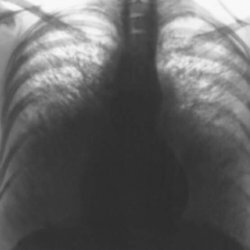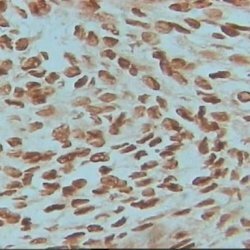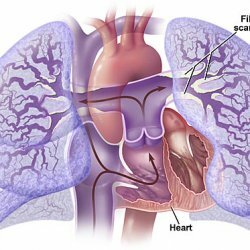Than to treat a cough in a child?

Cough is the most common problem with which a pediatrician is referred.Coughing for a child can become a real torture.It is not surprising that the appearance of this symptom greatly worries parents.And, of course, each parent needs to know the most common causes of cough and the available ways to deal with it.
Table of contents:Types of cough
Cough is a protective reaction.Thus, the body tries to clear the respiratory tract from a foreign body or accumulated mucus.Cough has different characteristics.
First of all, distinguish types of cough by duration:
- Acute( duration less than three weeks);
- Prolonged( from three weeks to three months);
- Chronic( more than three months).
By nature, distinguish between a dry and wet cough, timbre - barking, hoarse, muffled, soundless, sonorous.It is also important to consider the time of the cough: at night, in the morning, or throughout the day.
Cough is a symptom of a wide variety of diseases: from infectious to non-inflammatory.To overcome the cough, first of all, you need to identify the cause of its appearance, and then eliminate it.
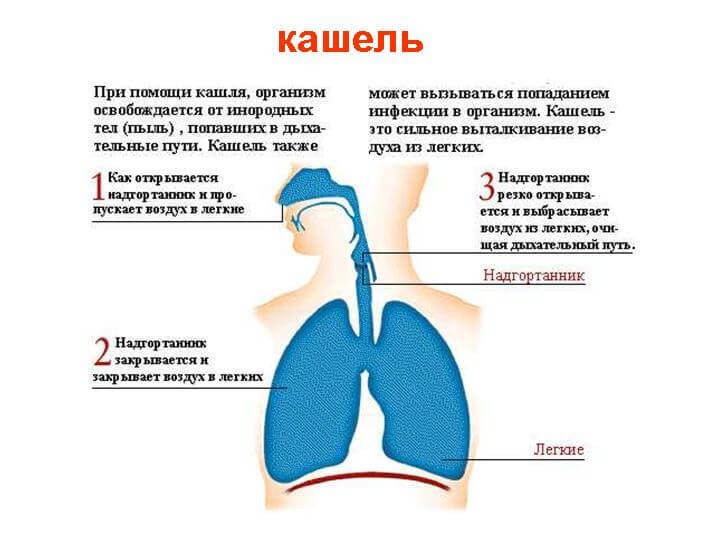
Dry cough in the child
Dry cough - deaf, painful, without sputum discharge.It is usually observed in children during the first days of acute respiratory viral infection, when acute laryngitis or pharyngitis, tracheitis, bronchitis develops.The child coughs during the day, and sometimes wakes up at night and tries to clear his throat.In favor of SARS speak such symptoms as weakness in the baby, a decrease in his activity, fever, chills, runny nose, sore throat.
Dry cough is peculiar to bronchial asthma, it can worsen when the child contacts allergens.Periodically, there are attacks of suffocation, during which the child has shortness of breath, he is unable to take a full breath, which leads to a shortage of air and a sensation of suffocation.After an attack, a rather viscous, vitreous sputum is released in a small volume.Treatment of bronchial asthma is carried out by special groups of drugs.Wet cough
A wet cough occurs two to three days after the onset of the first signs of an acute respiratory illness.For a damp cough, a sonorous sound and sputum discharge are characteristic.Children themselves feel relief when the cough changes from dry to wet.However, if the sputum is viscous, its loss can be difficult and to solve this problem it is necessary to take mucolytic drugs
. Overall, if cough from dry to wet has become a favorable sign on the background of treatment of an infectious disease of the respiratory tract.
Cough in a child without temperature
 If a child cough, runny nose and fever, parents will immediately think about ARVI.But if the child periodically coughs, but it is active and the temperature is not increased, this already leads parents into confusion.In children, a prolonged cough without fever may be a consequence of SARS.In this case, cough is the result of increased sensitivity of cough receptors, as well as increased production of sputum after infection.Such a cough is not a sign of the disease and does not need active therapy.However, if the child becomes more passive, and the temperature rises, then it seems to be worthwhile to see the doctor.
If a child cough, runny nose and fever, parents will immediately think about ARVI.But if the child periodically coughs, but it is active and the temperature is not increased, this already leads parents into confusion.In children, a prolonged cough without fever may be a consequence of SARS.In this case, cough is the result of increased sensitivity of cough receptors, as well as increased production of sputum after infection.Such a cough is not a sign of the disease and does not need active therapy.However, if the child becomes more passive, and the temperature rises, then it seems to be worthwhile to see the doctor.
If a child has started coughing suddenly, the first thing to think about is getting a foreign body into the respiratory tract.This is often found when during the game the child breathes in small details of toys.If the foreign body blocks the lumen of the respiratory tract, an asthma attack may occur when the child is unable to inhale air and tries to make convulsive breaths.The facial skin can acquire a cyanotic color.Such situations do not suffer procrastination.The child must be placed with his stomach, bending over his knee and tapping his hand on the back so that the foreign body can exit.
In addition, a cough without fever is typical for bronchial asthma, the symptoms of which are described above.
Cough at night
Recommended to read:The cause of night cough may not be respiratory diseases.So, often cough at night occur in children with sinusitis( inflammation of the paranasal sinuses).With sinusitis, hypersecretion of mucus occurs, which accumulates in the inflamed sinus.When the child assumes a horizontal position, the mucus flows out of the sinus and drains along the back wall of the nasopharynx, which causes a reflex reaction in the form of a cough.
Nocturnal cough is observed with such a common disease as adenoiditis - inflammation of the nasopharyngeal tonsil.When the child takes a horizontal position, the enlarged tonsil irritates the pharyngeal walls, which causes a cough.Also, a significant role in the occurrence of coughing is played by the draining of mucus along the pharynx and the drying out of the mucous membrane of the pharynx, due to the fact that the child breathes through the mouth and not nose.Another manifestation of adenoiditis is the appearance of snoring in a child.

Even pathology of the digestive tract can cause night cough.So, with gastroesophageal reflux, there is a throwing of gastric contents into the esophagus, as well as flowing into the throat, which causes a cough.Cough at night is characteristic for whooping cough.At the beginning of the disease the child's fever rises, he becomes sluggish and whiny, a runny nose, a dry, unproductive cough are observed.But at this stage it is difficult to distinguish whooping cough from other acute respiratory diseases.
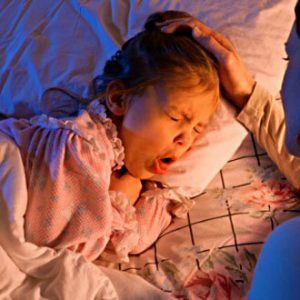 Approximately to the third week of the disease, cough becomes more pronounced, acquires a paroxysmal character.Thus, coughing attacks occur not only during the day, but often at night.The child coughs and wakes up in the middle of the night.During a cough, quickly followed by a few exhalations, followed by a convulsive hissing breath.This symptom was called a reprise.During an attack the child's face becomes purple.At the end of coughing from the respiratory tract, viscous transparent sputum is released, and often vomiting.
Approximately to the third week of the disease, cough becomes more pronounced, acquires a paroxysmal character.Thus, coughing attacks occur not only during the day, but often at night.The child coughs and wakes up in the middle of the night.During a cough, quickly followed by a few exhalations, followed by a convulsive hissing breath.This symptom was called a reprise.During an attack the child's face becomes purple.At the end of coughing from the respiratory tract, viscous transparent sputum is released, and often vomiting.
Night cough is also common in children with bronchial asthma.Often it arises already directly closer to the morning.It is possible that such a cough is an allergic reaction to the dust mite contained in the feather pillow.In some children, this may not be an ordinary cough, but even equivalents of asthma attacks.
Barking cough in a child
A dry, barking cough is a symptom of the infectious inflammatory process in the throat.Laryngitis usually develops in ARVI.But with influenza or parainfluenza, it is worthwhile to fear the complication of laryngitis-false croup.This condition is a consequence of the edema of the larynx, which leads to a narrowing of the larynx lumen, because of which the airflow hardly passes through the respiratory tract.
For a false groin, a triad of symptoms is characteristic:
- Barking cough;
- Roughness of voice;
- Stenotic( noisy) breathing.
 The development of croup is evidenced by the growth of dry, barking cough.The child becomes nervous, restless.Soon there is shortness of breath, the child's breathing becomes noisy, difficult.At first, shortness of breath is observed during crying, movement of the baby, but as the disease progresses, it can also occur at rest.Due to lack of oxygen, the skin can become bluish.Therefore, if you have symptoms of croup, you should always consult a doctor.
The development of croup is evidenced by the growth of dry, barking cough.The child becomes nervous, restless.Soon there is shortness of breath, the child's breathing becomes noisy, difficult.At first, shortness of breath is observed during crying, movement of the baby, but as the disease progresses, it can also occur at rest.Due to lack of oxygen, the skin can become bluish.Therefore, if you have symptoms of croup, you should always consult a doctor.
Cough treatment in a child
As mentioned, cough is a protective reaction of the body.The goal in the treatment of cough is not to suppress, but rather to change its characteristics.Suppression of coughing in cases where the body thus tries to cope with the infection and to withdraw phlegm from the respiratory tract is inexpedient.On the contrary, you need to help the body cleanse the airways.
Antibiotics
This is a well-known group of drugs that is well known to every parent.It is immediately necessary to make a remark, a cough in itself, whatever it is, is not a reason for prescribing antibiotics.These medicines are prescribed only when laboratory can confirm the bacterial nature of the disease( sinusitis, pneumonia).
By the way, bronchitis in most cases have a viral nature, so the appointment of antibacterial drugs in this case does not make sense.What to say about pharyngitis, laryngitis and tracheitis, which often occur precisely against the background of an acute respiratory viral infection.Therefore, the appointment of antibiotics should be approached responsibly and certainly not in any case not to choose a medicine independently without the attending physician.
But if the doctor has prescribed an antibiotic, then it is necessary to take it as long as it is attributed( usually not less than five days).And even more so do not throw the antibiotic because of the fact that the child began to feel better and cough less.
Antitussives
Because of a lack of understanding of the mechanism of cough, parents buy children antitussives, as well as advertised combination medicines containing the antitussive component.The essence of this group of drugs is that they depress the cough.That is, the child coughs less, but not because of the fact that he recovers, but because of the fact that the cough reflex is suppressed.And this condition can be quite dangerous, because mucus and microorganisms remain in the airways and do not go outside.Indications for the appointment of these drugs is the persistent need to suppress cough.
Thus, the use of antitussive drugs can be justified, for example, in whooping cough in the case of dry, debilitating cough, accompanied by vomiting or with pleurisy in the case of a severe, painful cough.
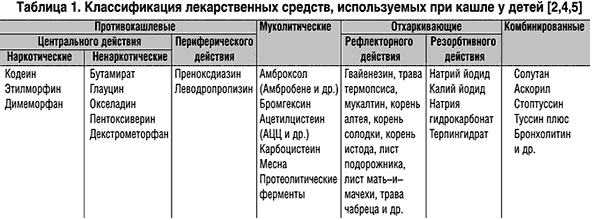
Mukolitiki
This is a group of medicines that helps to dissolve sputum.They are used mainly when coughing with thick and difficultly separated sputum.If the child has a cough moist, productive and abundant, then mucolytics are not used.Mucolytics are prescribed in the treatment of cough caused by infectious diseases of the lower parts of the respiratory tract( tracheitis, bronchitis, pneumonia). In pediatric practice, the following drugs of this group are used:
- Bromhexine;
- ACS;
- Fluimucil;
- Ambroxol.
Note: the combined use of antitussive and mucolytic drugs is contraindicated.
Expectorants
This is a group of drugs that facilitates the separation of sputum from cough due to its dilution and increased activity of the ciliary epithelium of the respiratory tract.Reception of expectorants leads to an increase in sputum volume, while mucolytics do not significantly increase its volume.
Do not be alarmed if, after taking expectorants, the cough in a child increases, and sputum will be released in larger quantities.This is the mechanism of action of these drugs, so they cleanse the airways of stagnant mucus.
The drawbacks of this group of drugs include the need for frequent use( every three to four hours), which certainly tires the child. Expectorants are mainly represented by herbal medicines:
- Mukaltin;
- Gedelix;
- Doctor of IOM;
- Licorice root;
- Althea root;
- Pertusin;
- Potassium iodide.
Folk cough remedies for children
Recommended to read:Cough was a problem for a person at all times.Our ancestors invented and used to cough up all sorts of folk recipes, many of which have survived to this day.
Here's one of them: you need to boil half a liter of milk.When the milk boils, it must be removed from the plate and add only a tablespoon of pine buds.Leave the milk to stand for an hour.After the specified time, you can start eating decoction.You need to drink half a liter of infusion all day long, giving as much to a child as he can drink.
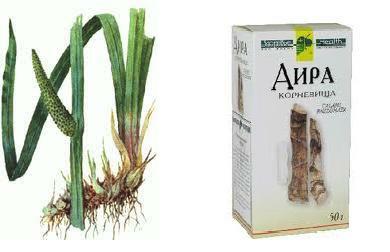 The root of ara is known for its properties to dilute sputum and to promote more efficient coughing, which makes the medicines from this plant.But the remedy can be prepared on your own.For this, it is necessary to throw in the boiling water the roots of the calamus, at the rate of one tablespoon of the plant for two hundred milliliters of water.It should be cooked for ten to fifteen minutes.When the broth cools down, strain it and give the baby half a glass half an hour before meals.For a day it is recommended to drink up to half a liter of this infusion.
The root of ara is known for its properties to dilute sputum and to promote more efficient coughing, which makes the medicines from this plant.But the remedy can be prepared on your own.For this, it is necessary to throw in the boiling water the roots of the calamus, at the rate of one tablespoon of the plant for two hundred milliliters of water.It should be cooked for ten to fifteen minutes.When the broth cools down, strain it and give the baby half a glass half an hour before meals.For a day it is recommended to drink up to half a liter of this infusion.
In the fight against cough, radish is successfully used, many parents remember this recipe from their childhood.Take a large, washed root and cut off the top of it.Inside the fetus, cut a hollow into which then place a tablespoon of honey.This radish should be covered with a cut top and left for ten to twelve hours.After the specified time, when honey is mixed with the radish juice, the product is ready for use.Syrup should be given to the child three times a day( preferably half an hour before meals) on a teaspoonful.The existing groove in the radish can be replenished with honey.And after three days will have to take a new root.
Note: for acute infectious processes, thermal procedures are contraindicated, this applies to keeping your feet in hot water and steam inhalations.The latter in the presence of edema of the mucous membranes( which is usually observed in ARVI) will only exacerbate both edema and the general condition of the child.Therefore, as with medicines, and with methods of traditional medicine, you need to be careful.
Grigorova Valeria, medical reviewer

